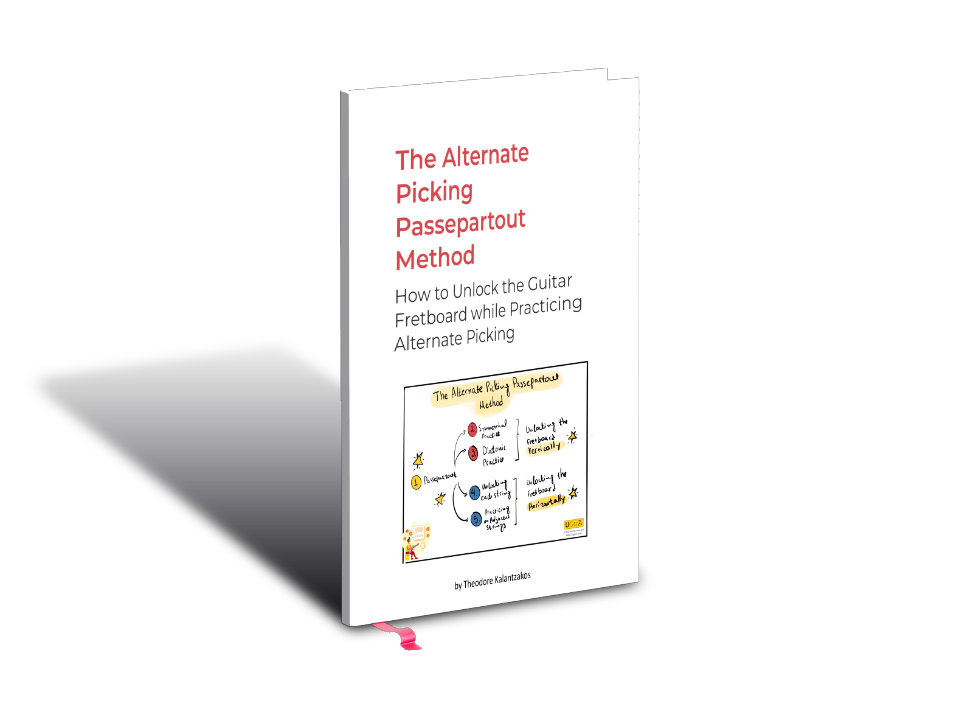

You know that you need to improve your alternate picking.
But searching for random exercises online is not what it make this happen.
In this article, I’ll be showing you a strategic point of view on what categories of alternate picking there are and thus what kind of exercises you should practice.
After reading this, you’re gonna know exactly what your alternate picking practice schedule should contain.
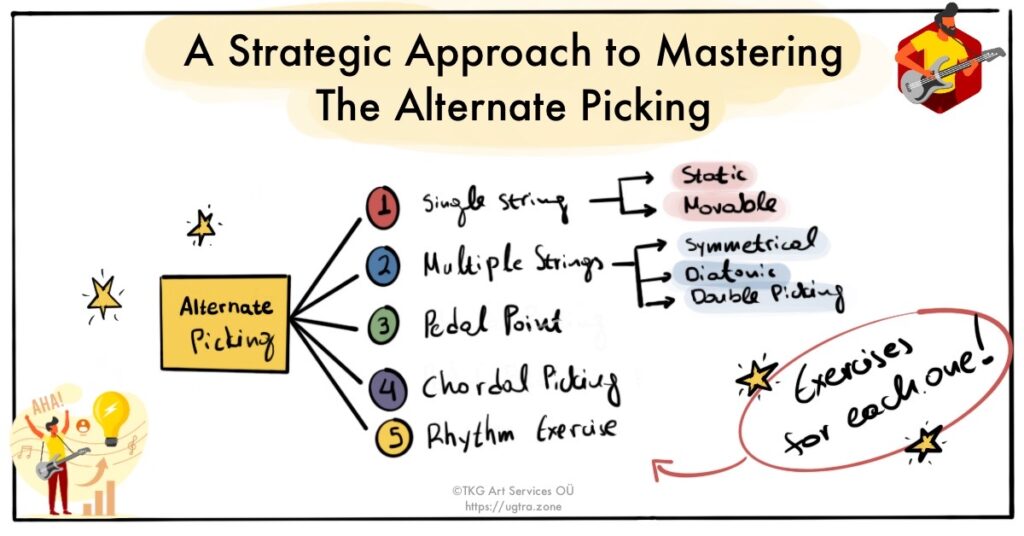

Topics
- Single String Picking
- Static
- Movable
- Multiple Strings
- Symmetrical
- Diatonic
- Double Picking
- Pedal Points
- Chordal Picking
- The Forgotten Exercise
1. Single String Picking
[The following story is an excerpt from my book The Alternate Picking Passepartout Method]
I took a few Byzantine music lessons several years ago.
Μy teacher happened to be a track and field athletics coach as well.
Someday he told me the following story.
Years ago, athletes from around the world gathered to participate in a tournament here in Greece.
Among them was a great shot-put athlete.
During a warm-up, he was repeatedly pushing (as the athletes like to say) a sphere at the sand pit.
My teacher asked his coach:
“Why does a top-level athlete practice an exercise that is generally suggested to the very beginners?”
“His technique is not so accurate at the end of the movement”, he said.
“So, this is a great exercise to focus on this weakness and improve it.”
Single-string guitar exercises do the same.
They look simple, designed for very beginners, but they’re the opposite.
They do excellent work, focusing on the fretting hand’s finger accuracy, independency, and coordination with the picking hand.
They are one of my faves, perfect for building muscle memory and I still enjoy practicing them.
Don’t overlook or underestimate them.
They work great.
We have 2 kinds of single string exercises:
a. Static
Perfect for finding the proper picking hand positioning on the instrument and working on finger independence.
I like to practice them most of the time at the middle range of the guitar (around the 5th fret) because it’s easier to move later to other positions.
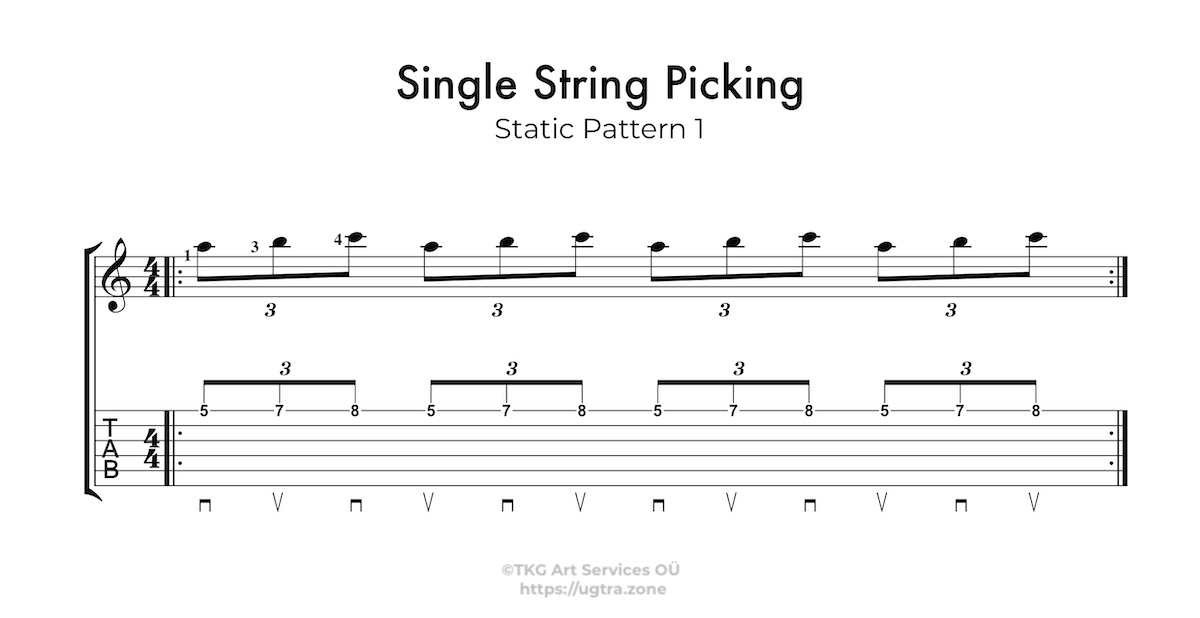

b. Movable
A great way to work the horizontal movement on the neck and build some single-string lines as well.
This will help you to put alternate picking into action and use it in your improvisations.
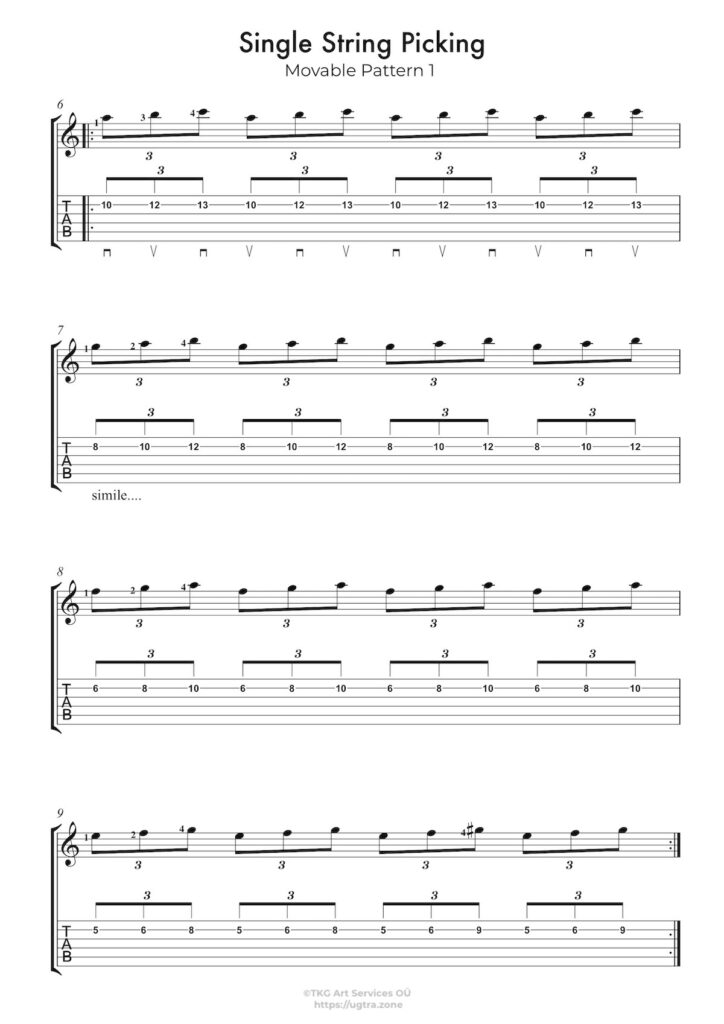

Tips
- Use the tip of your fingers
- Press the string right before the fretwire
- Place your thumb behind the neck. The sweet spot is somewhere behind the 1st and 2nd fretting hands fingers.
- Be careful when shifting from position to position. It’s easy to miss the appropriate fretting hand technique. Keep your fretting hand’s palm parallel to the neck.
2. Multiple Strings
After spending some hours practicing single-string exercises, we can start working on multiple strings.
You can think of these exercises as a set of single-string patterns moving vertically and/or horizontally on the fretboard.
We have 2 categories of multiple strings exercises:
a. Symmetrical
We keep the same pattern while moving from string to string.
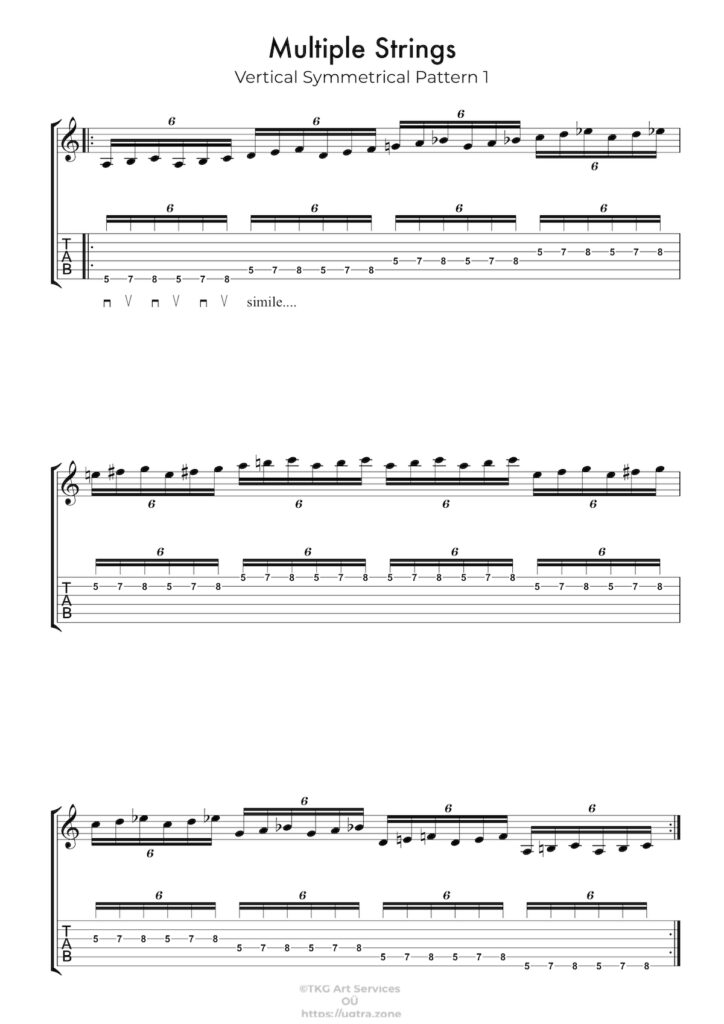

b. Diatonic
We change the pattern on each string to fit the desired scale.
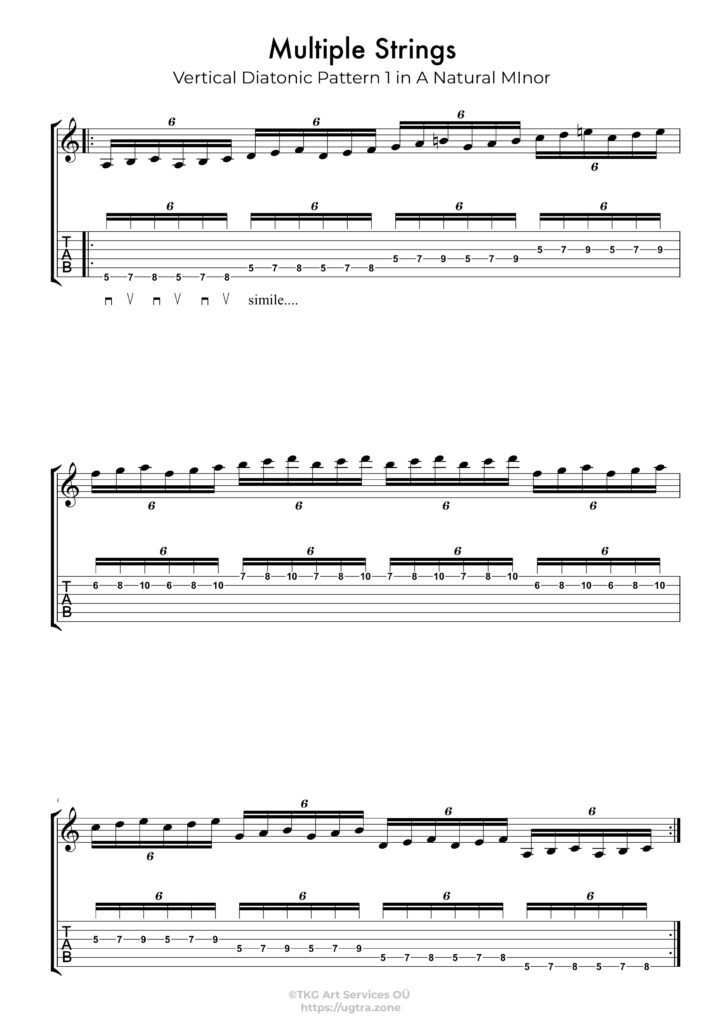

c. Double Picking
Double picking can be either symmetrical or diatonic.
You can use anything from simple major scales, arpeggios, or melodic sequences.
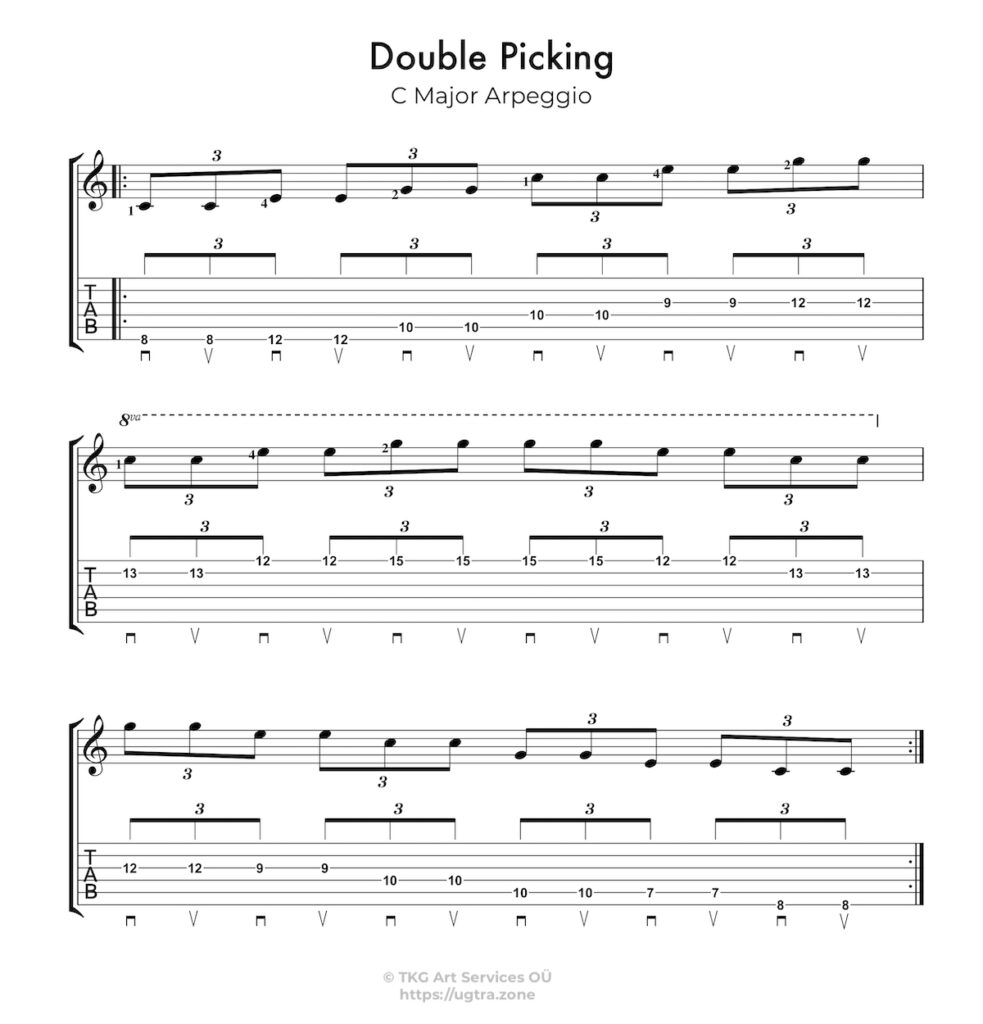

Tip
- Keep your left hand’s palm parallel with the neck as moving vertically across the strings.
- Take the advantage of the sequential nature of the diatonic multiple string exercises and enrich your improvisation by using fragments of them.
- Be careful with your muting when leaving one string and moving to the next. Unwanted noise may occur. Use both hands to eliminate noise. The picking hand mutes the strings above the one you pluck and the fretting hand the below ones.
3. Pedal Points
If you like Neoclassical, Baroque-style licks (a la Yngwie Malmsteen, Jason Becker, etc.), you’re gonna love these licks.
Generally, a pedal point is a sustained note, typically in the bass, while the harmony or melody changes above.
In guitar, we mimic this effect by adding one (or two in some cases) notes between the notes of the melody.
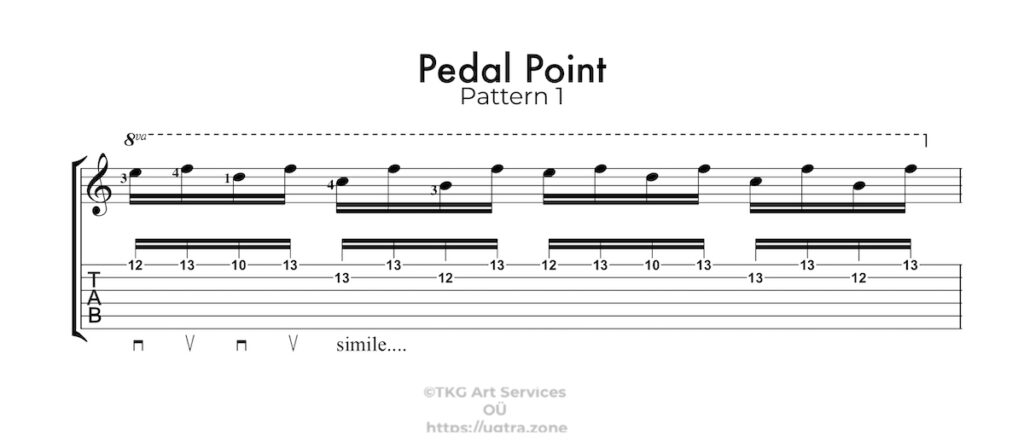

Tips
Try to play the notes tenuto.
This means keeping the note values as large as possible but don’t let them ring together.
This is the tricky part of the pedal points, as the finger that plays the pedal note can get “lazy” and keep fretting the string.
4. Chordal Picking
One of the most challenging parts of alternate picking is the change from string to string [especially outside picking].
Chordal picking is a nice way to practice picking accuracy and at the same time, expand your chordal vocabulary for song intros.
We have 2 kinds of chordal picking:
a. Single Chord
Use only one chord to move vertically up and down the strings.
I like to use simple open chords or basic three-string chords for this, in order to keep my left hand relaxed and focus on my pick angles.
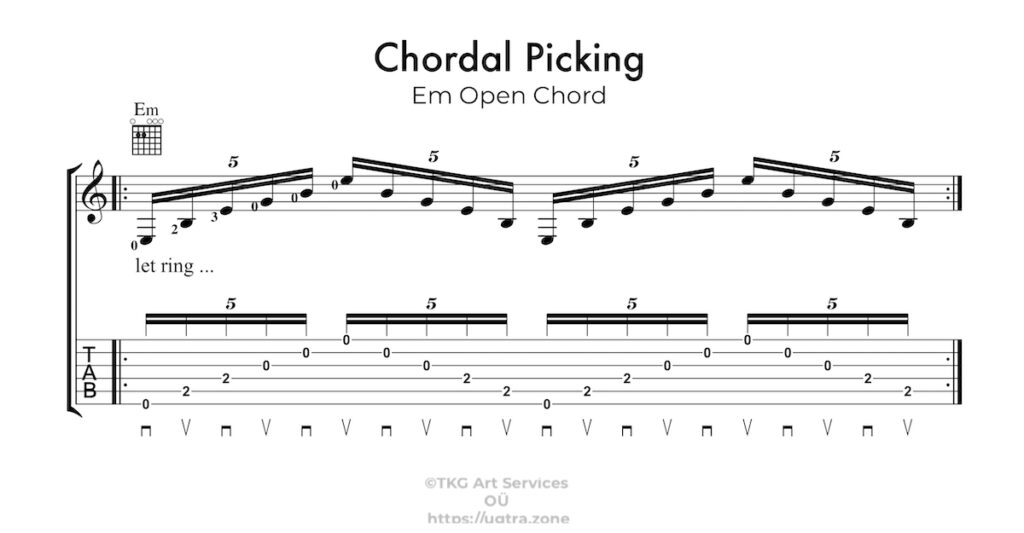

b. Multiple chords (Harmony)
Using a beautiful chord progression is an excellent way to motivate ourselves on putting hours into chordal picking.
Also, we learn how to move from chord to chord while keeping our picking hand’s motion steady in time.
[the following exercise is inspired by my band’s composition “Night’s first Silence“]
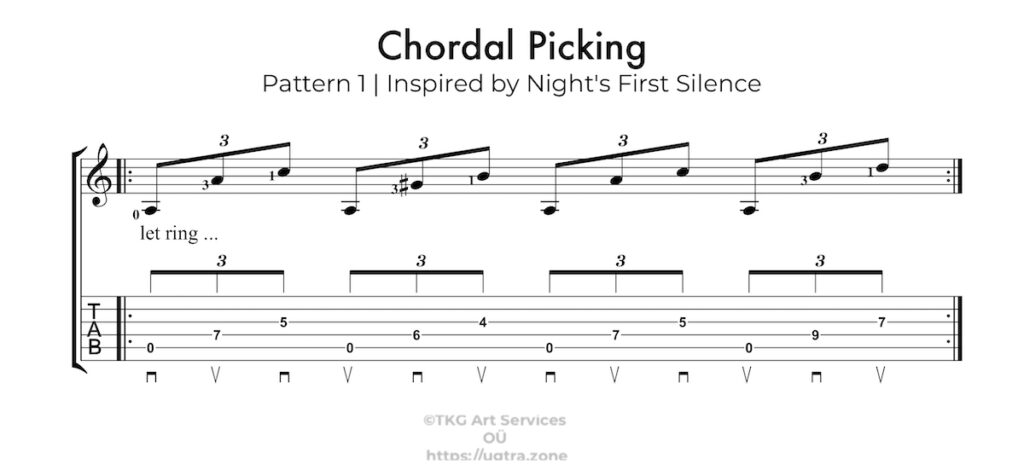

Tips
The most common mistake is to play staccato (or omit) the last 1-2 notes of each chord when playing chord progressions.
It’s easy to rush the transition from shape to shape or position to position and lose these notes.
Chordal picking needs excellent coordination and tight rhythm.
Let the strings ring as much as possible.
5. The Forgotten Exercise
Complex technique exercises are not always better than simple ones.
[contrary to what many guitar students believe]
In The 6 Essential And Advanced Guitar Techniques You Must Know, I mention one crucial element of alternate picking.
Both hands need to play the same note values.
This means that they need to accurately subdivide the beat and synchronized perfectly with the metronome and each other as well.
The following exercise focuses on picking hand and timekeeping alone.
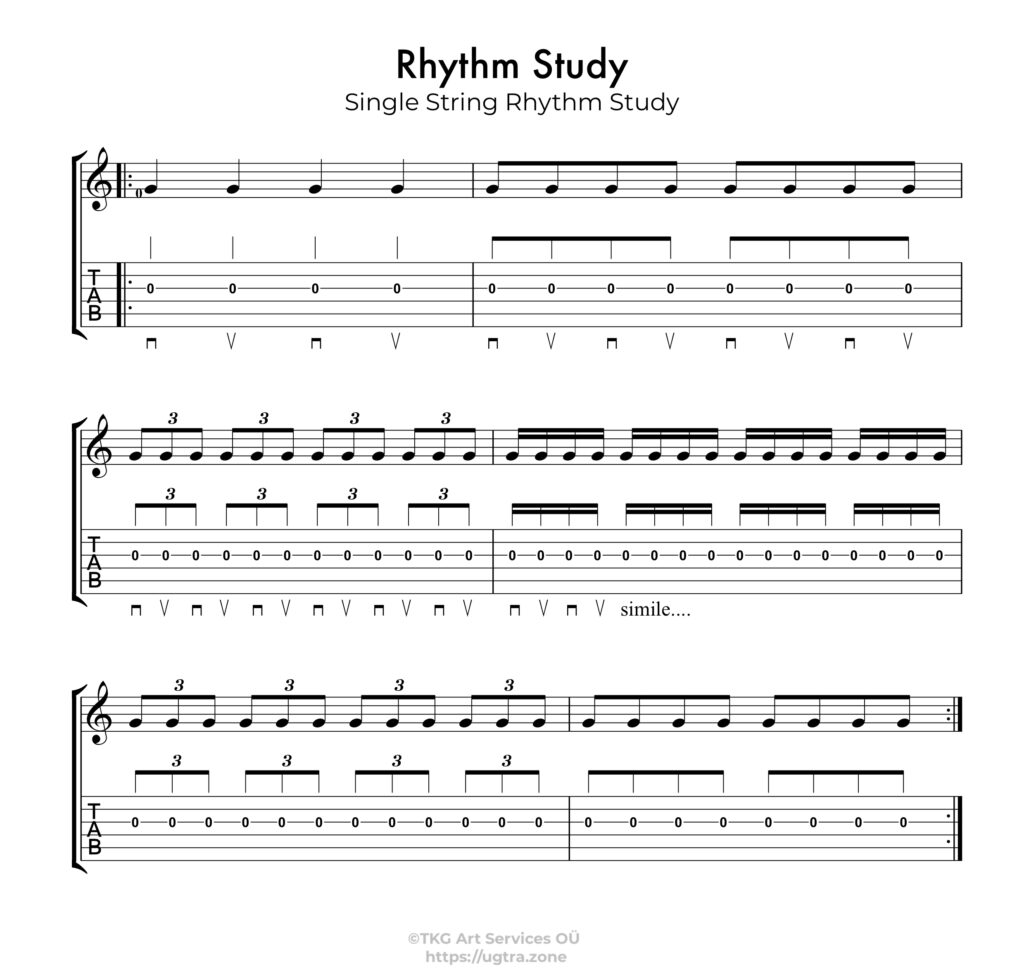

By practicing the various note values in a row on single strokes, you can rest assured that your right hand can follow them accurately in various exercises and odd sequences.
At the same time, you expand your rhythm vocabulary, something that is extremely important when improvising.
Tip
The most tricky part of this exercise is to keep playing in the pocket while changing from triplets to any other note values and the opposite.
Speaking can divide the time easier and more accurately than our hands in the beginning.
Try to divide the beat by pronouncing the subdivisions (by saying 1, 2, 3 repeatedly for example), and then let your hand follow.
Don’t stop.
Keep saying the subdivisions loudly while playing.
[Upcoming: The Alternate Picking Passepartout Book – How to Unlock the Guitar Fretboard while Practicing Alternate Picking]
